Western Gorilla
- January 18, 2024
- 0 comment
The Western Gorilla, scientifically known as Gorilla gorilla, is a fascinating and critically important species of great ape that inhabits the lush rainforests of Central and West Africa. Within this species, there are two distinct subspecies: the Western Lowland Gorilla (Gorilla gorilla gorilla) and the Cross River Gorilla (Gorilla gorilla diehli). These remarkable creatures share a close genetic connection with humans and are known for their robust physique, strong arms, and distinctive facial features.
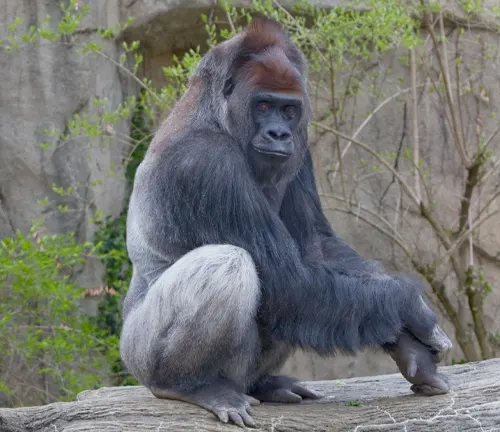
Western gorillas live in close-knit family groups known as troops, led by a dominant silverback male. They exhibit a complex and highly social structure, communicating through a combination of vocalizations, body language, and facial expressions. These primates are not only highly intelligent but also capable of experiencing a wide range of emotions, adding to their allure.
In terms of their diet, Western gorillas are primarily herbivorous, with a menu consisting of fruits, leaves, stems, and occasionally insects. They play a crucial role in their ecosystems by aiding in seed dispersal, contributing to the biodiversity of the rainforests they call home.
However, the Western Gorilla faces significant threats, including habitat loss due to deforestation, illegal logging, and human encroachment. Poaching for bushmeat and diseases such as Ebola further endanger their populations. As a result, both subspecies are classified as endangered and critically endangered, necessitating urgent conservation efforts.
Conservation organizations and researchers are tirelessly working to protect these incredible primates and their habitats. Their efforts include establishing protected areas, combatting illegal wildlife trade, and raising awareness about the importance of Western Gorilla conservation.
| Attribute | Description |
|---|---|
| Scientific Name | Gorilla gorilla |
| Subspecies | Western Lowland Gorilla (Gorilla gorilla gorilla) |
| Cross River Gorilla (Gorilla gorilla diehli) | |
| Geographic Range | Central and West Africa |
| Habitat | Lush rainforests and dense vegetation |
| Physical Characteristics | Robust physique with brownish-grey fur |
| Strong arms and distinctive facial features | |
| Social Structure | Live in family groups called troops |
| Led by a dominant silverback male | |
| Communication | Vocalizations, body language, and facial expressions |
| Diet | Herbivorous, consuming fruits, leaves, stems |
| Occasional consumption of insects | |
| Ecological Role | Seed dispersal, contributing to rainforest biodiversity |
| Conservation Status | Western Lowland Gorilla: Endangered |
| Cross River Gorilla: Critically Endangered | |
| Threats | Habitat loss due to deforestation and human encroachment |
| Poaching for bushmeat | |
| Diseases like Ebola | |
| Conservation Efforts | Protected areas, anti-poaching measures, awareness campaigns |
| Notable Organizations | World Wildlife Fund (WWF), Dian Fossey Gorilla Fund, African Wildlife Foundation |
| Importance | Vital for rainforest ecosystem health and biodiversity |
| Close genetic ties to humans |
Exploring the Wonders of Western Gorillas

The Taxonomy of Western Gorillas
Western gorillas are categorized into two distinct subspecies: the Western Lowland Gorilla (Gorilla gorilla gorilla) and the Cross River Gorilla (Gorilla gorilla diehli). Let’s take a closer look at each of these subspecies.
Western Lowland Gorilla (Gorilla gorilla gorilla)
The Western Lowland Gorilla is the most widespread subspecies and is known for its relatively smaller size compared to the Cross River Gorilla. They are characterized by their brownish-grey fur, and adults typically weigh between 150 to 400 pounds. These gorillas are predominantly herbivorous, with their diet consisting of fruits, leaves, and stems.
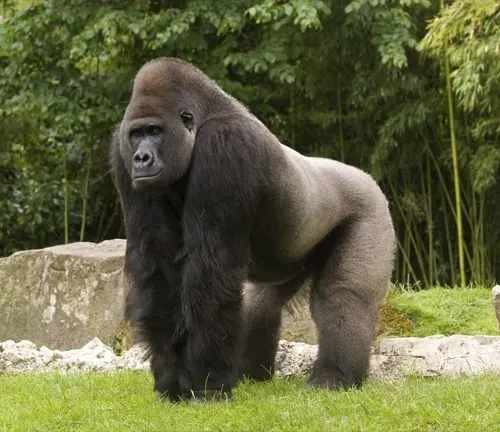
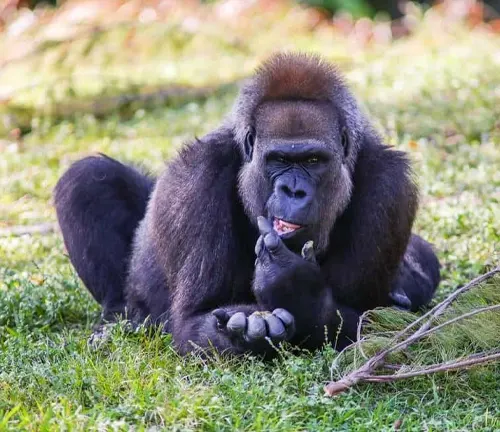
Cross River Gorilla (Gorilla gorilla diehli)
On the other hand, the Cross River Gorilla is one of the rarest primate subspecies on the planet. They inhabit the rugged terrain along the Nigeria-Cameroon border and are critically endangered. Cross River Gorillas have darker fur, and their population is estimated to be less than 300 individuals. Their diet primarily consists of fruits, but they also consume insects and leaves.
Behavior and Social Structure
Western gorillas are known for their complex and intricate social structures. They live in groups called troops or bands, led by a dominant silverback male. The silverback is responsible for protecting the group and making important decisions. Western gorillas are highly intelligent and exhibit a wide range of emotions, including joy, sadness, and fear.
Within these troops, females and their offspring form close-knit relationships. Young gorillas learn essential life skills by observing and imitating the adults in the group. Communication among Western gorillas involves vocalizations, body language, and facial expressions, allowing them to convey their feelings and intentions effectively.
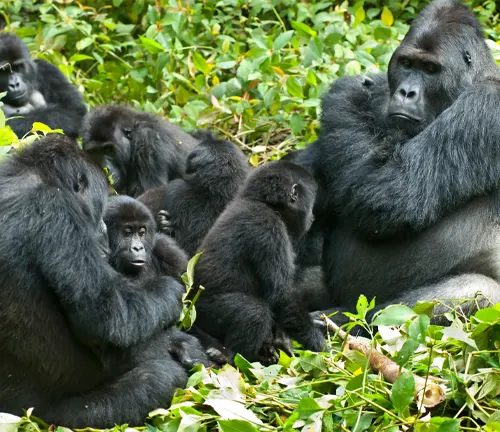
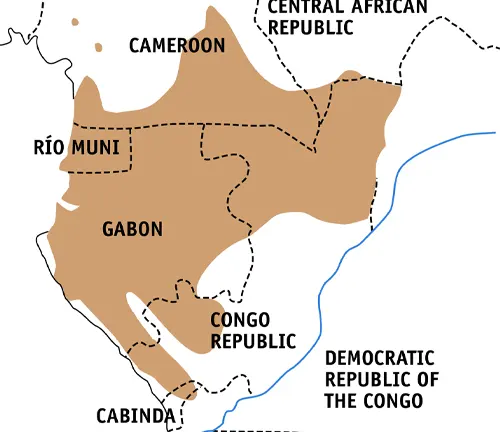
Habitat and Range
Western gorillas are predominantly found in the lush rainforests of Central and West Africa. Their habitat encompasses countries such as Cameroon, Gabon, Nigeria, the Republic of Congo, and Equatorial Guinea. These forests provide them with an abundant supply of food and dense vegetation for shelter.
However, the Western gorilla’s natural habitat is under constant threat from deforestation, illegal logging, and human encroachment. Conservation efforts are vital to preserving these remarkable creatures and their ecosystems.
Conservation Status
Both subspecies of Western gorillas face significant conservation challenges. The Western Lowland Gorilla is listed as endangered by the International Union for Conservation of Nature (IUCN), primarily due to habitat loss, poaching, and diseases such as Ebola. The Cross River Gorilla, as mentioned earlier, is critically endangered and faces a high risk of extinction without immediate intervention.
Conservation organizations and governments are working tirelessly to protect these gorillas and their habitats. Efforts include establishing protected areas, combatting illegal wildlife trade, and raising awareness about the importance of conservation.
Different Species

Western Lowland Gorilla
(Gorilla gorilla gorilla)
This is the most common and widespread subspecies of Western gorilla. Western Lowland Gorillas have brownish-grey fur and are relatively smaller in size compared to their counterparts, the Cross River Gorillas. They primarily inhabit the lowland rainforests of Central and West Africa.
Cross River Gorilla (Gorilla gorilla diehli): The Cross River Gorilla is one of the rarest and most endangered primate subspecies in the world. They are known for their darker fur and inhabit the rugged terrain along the Nigeria-Cameroon border. The population of Cross River Gorillas is estimated to be less than 300 individuals, making them critically endangered.
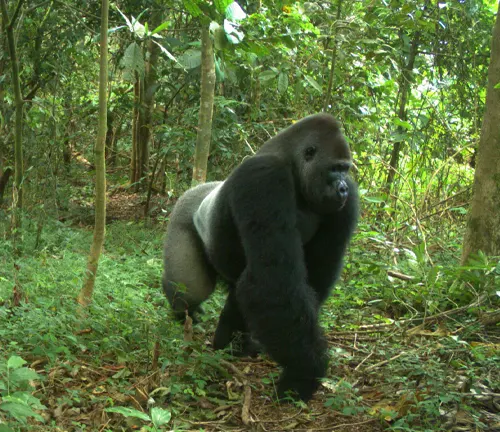
Frequently Asked Question (FAQs)
- What is the population size of Western gorillas in the wild?
The population size of Western gorillas in the wild varies for each subspecies. Western Lowland Gorillas have a larger population estimated at around 100,000 individuals, while Cross River Gorillas have a much smaller population, estimated to be less than 300 individuals. - How do researchers and conservationists track and monitor Western gorilla populations?
Researchers and conservationists track Western gorilla populations through a combination of field surveys, camera traps, genetic analysis, and satellite tracking collars on individual gorillas. These methods help gather data on their distribution, behavior, and health. - Are Western gorillas found in captivity or in zoos?
Yes, Western gorillas are found in captivity in accredited zoological facilities and wildlife reserves around the world. These captive populations are essential for research, education, and conservation efforts. - What is the gestation period of a Western gorilla?
The gestation period of a Western gorilla is approximately 8.5 months, similar to that of humans. - Do Western gorillas exhibit any cultural behaviors or traditions within their troops?
Western gorillas have been observed exhibiting cultural behaviors, such as specific vocalizations and grooming practices, within their troops. These behaviors can vary among different groups. - How do Western gorillas adapt to their rainforest environment?
Western gorillas adapt to their rainforest environment by using their strong arms for climbing, swinging, and foraging in trees. Their diet primarily consists of fruits, leaves, and stems found in the dense rainforest vegetation. - Are there any ongoing research projects focused on Western gorillas?
Yes, there are numerous ongoing research projects dedicated to studying Western gorillas. These projects focus on various aspects of their biology, behavior, genetics, and conservation needs. - Do Western gorillas have any specific predators besides humans?
While Western gorillas have few natural predators, they may occasionally face threats from large predators such as leopards and large crocodiles. - What is the reproductive rate of Western gorillas in the wild?
Western gorillas have a relatively low reproductive rate. Females typically give birth to a single offspring every 3 to 4 years. - What are the differences in behavior and diet between male and female Western gorillas?
Male Western gorillas, especially the silverbacks, are responsible for protection and leadership within the troop. Females often play a more nurturing role. Diet is generally similar, with both sexes primarily consuming vegetation and fruits. - Can Western gorillas interbreed with other gorilla species or subspecies?
While gorilla species and subspecies have some genetic differences, they can interbreed in captivity. However, this is not common in the wild due to their distinct ranges. - Are there any famous Western gorillas that have been studied extensively?
Yes, some Western gorillas, such as Koko the gorilla, have gained fame for their ability to communicate using sign language and have been subjects of extensive research. - How do Western gorillas contribute to ecotourism in their native regions?
Western gorillas can contribute to ecotourism by attracting visitors to their natural habitats. Responsible ecotourism provides funding for conservation efforts and supports local communities. - What are the key features that distinguish Western gorillas from other great apes like chimpanzees and orangutans?
Key distinguishing features of Western gorillas include their larger size, robust body structure, distinct facial features, and unique behaviors and social structures. - What organizations are actively involved in Western gorilla conservation, and how can I support their efforts?
Several organizations, including the World Wildlife Fund (WWF), the Dian Fossey Gorilla Fund, and the African Wildlife Foundation, are actively involved in Western gorilla conservation. You can support their efforts by donating, volunteering, or raising awareness about the conservation of these incredible primates.









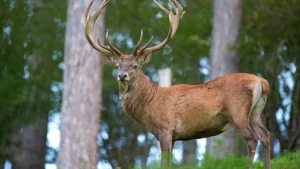




Leave your comment